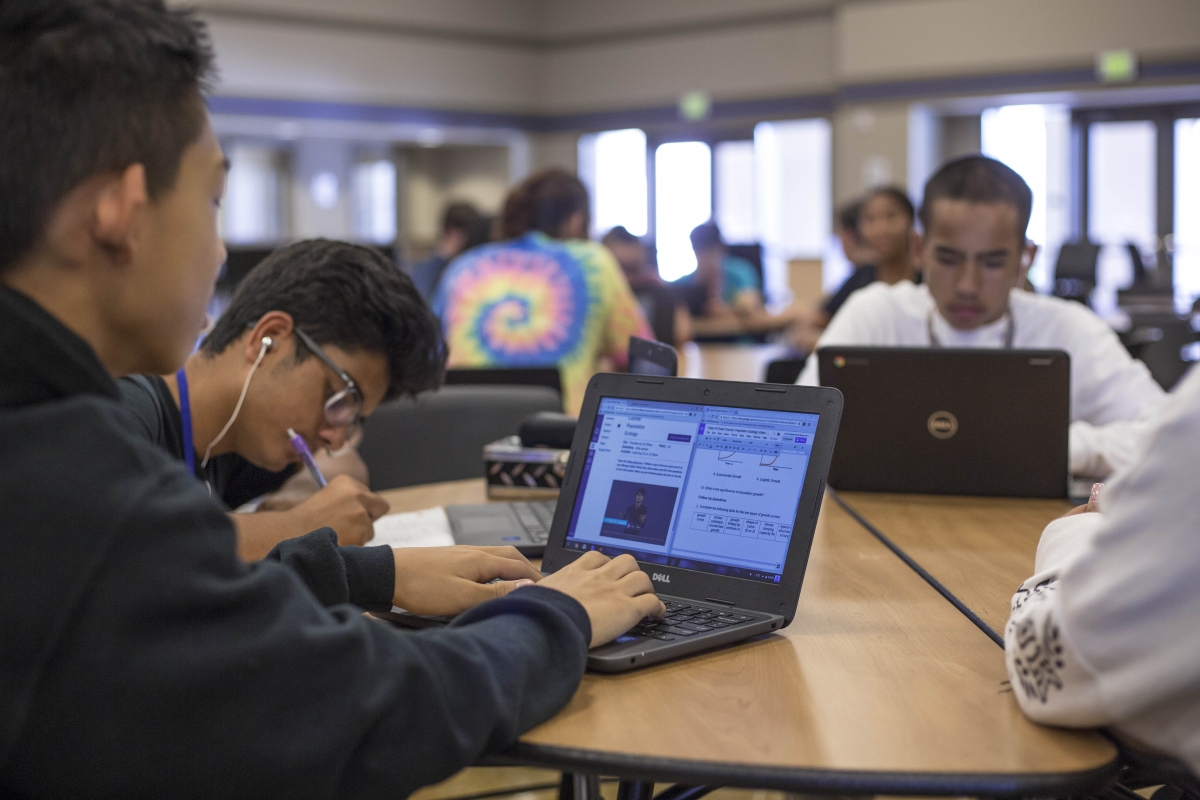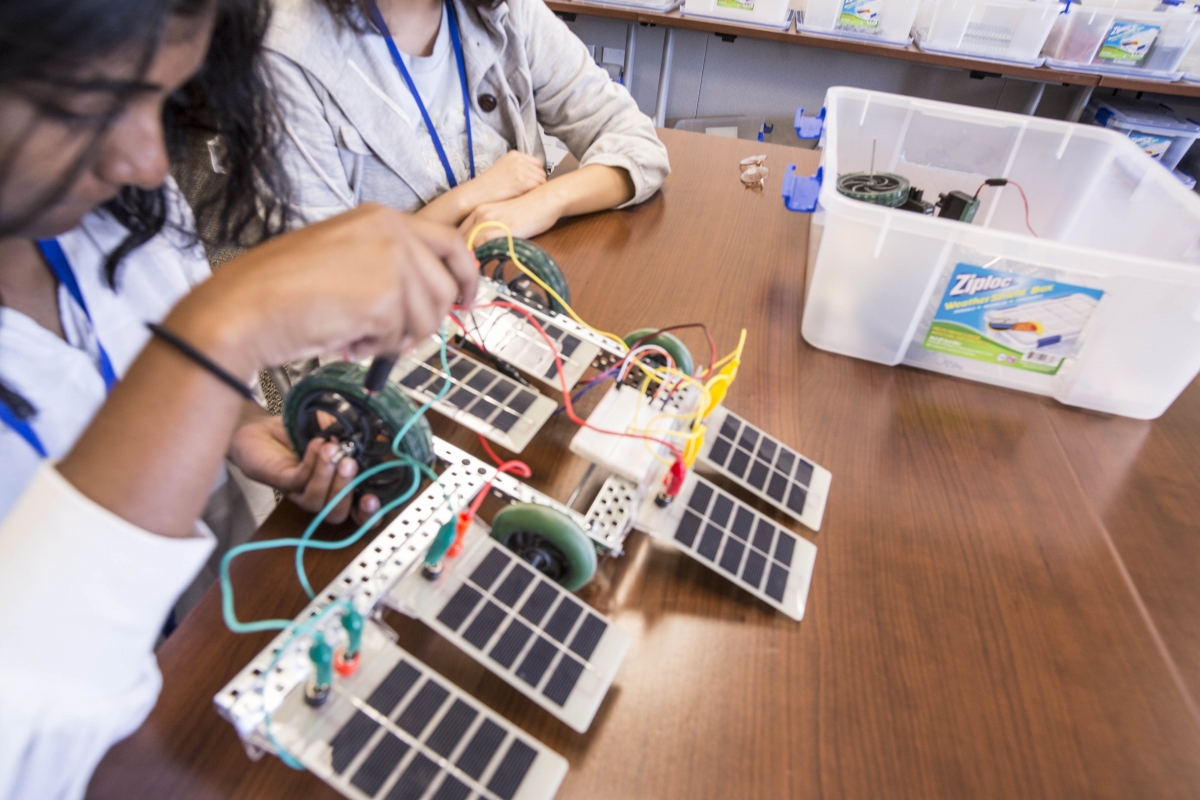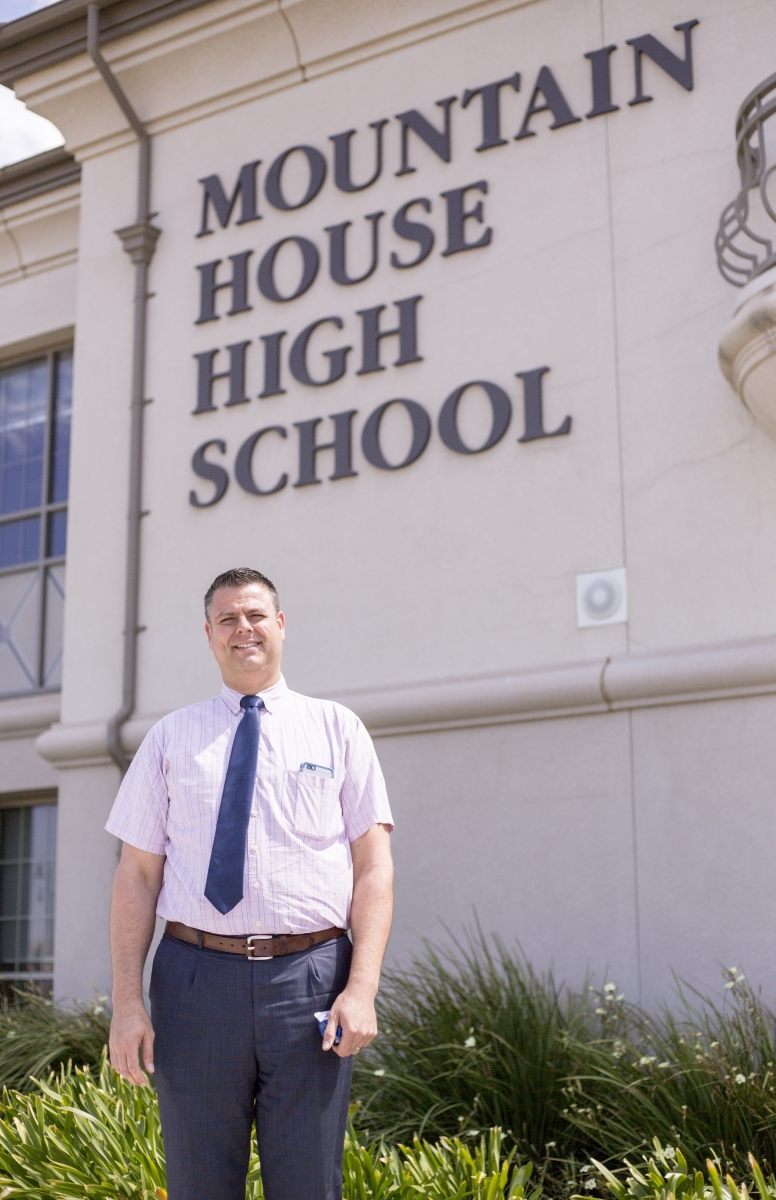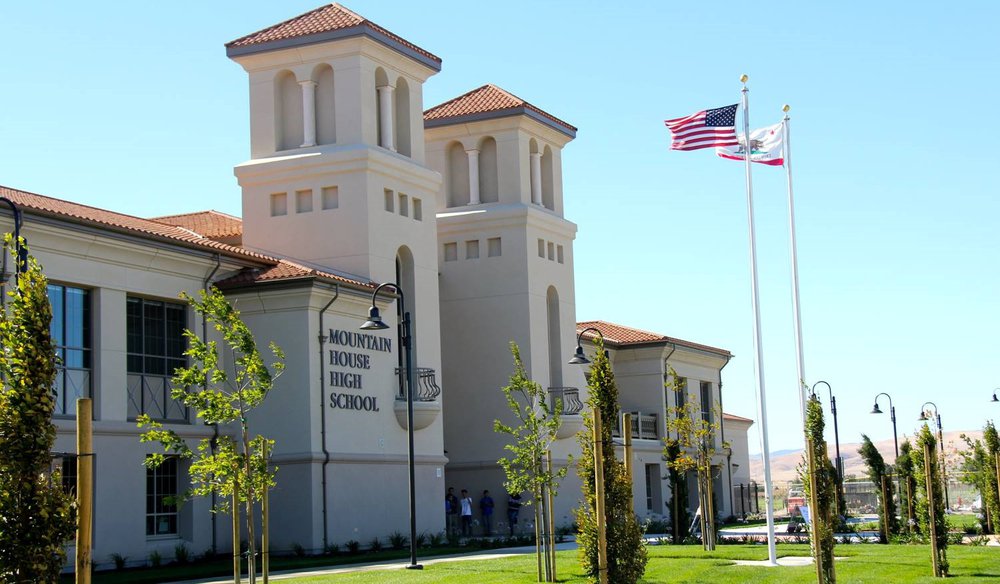Mountain House is a four-year comprehensive high school, the first and only planned comprehensive high school in the Lammersville Unified School District, serving a rural community just outside of the San Francisco Bay Area. Opened in the Fall of the 2014-2015 school year, Mountain House stepped out, not only as a digitally and technically “connected” school, but also as a school with a vision for modern day teaching and learning.
Principal Ben Fobert came on mid-2013, before the school was opened, playing a key role in helping to plan a new culture and structure. “This was going to be a school built with a fresh look at not just having cool devices but how the physical buildings and scheduling would be handled,” he stated. “We rethought ‘the bells,’ and also where students would be comfortable learning inside and outside the classrooms. We made sure we had fast Wi-Fi everywhere and moved towards giving the students more responsibility for their education.”
Learning Counsel: What would you say is your most fundamental change or difference between Mountain House and what most would consider a traditional high school?
Principal, Ben Fobert: One of the most important strategic movements that we’ve done here at Mountain House High School is to create an online and hybrid program where students can participate in a program that includes brick-and-mortar facilities and services with the online program.
LC: Take us into a little more detail about how you do that.
BF: Well, when we looked into implementing a supportive online program or some sort of program that would help students learn in a more personalized atmosphere if the classroom wasn’t working for them, we wanted to turn it on its head. We didn’t want it to be the traditional online school where it was impersonal and all they had was a teacher that they could talk to online.
We had the benefit of having the traditional brick-and-mortar facility where we could have sports and clubs and organizations and a physical facility that kids can come to and real teachers that they can come see. So, we designed a program where students can sign up for online schooling, take all of the classes that they want to online and, yet, still come to campus and take that band class or that mock trial class or the debate class or any of the classes that we offer face-to-face.
If they just struggle with math, for example, they can have a class and do it traditionally. But, if they do want to do the class online that is still an option and if they want face-to-face teacher time, they can come in and see a teacher right at the school. This way they get a credentialed teacher either way, as a tutor outside class times or in the classroom. We want students to have a lot of options to make it.
We really feel that those we’ve recaptured already this school year have already noticed the difference between their old online school that they participated in and the schooling that they’re participating in now through Mountain House High School.
Again, these kids get to come and we’ve got a brand-new Library-Learning Commons. They can come and sit in the library all day if they want. They have access to the online teacher facilitator that helps them facilitate the work that they’re supposed to complete. They can come and have lunch with their friends, they can participate in sporting activities and music and art opportunities right here on our campus.
LC: How have you reworked the scheduling of the brick-and-mortar classroom learning?
BF: We took a close look at the way that we schedule our students to make sure that the opportunities that we provide for them work for them in a personalized manner. We continue to look at those things, we’re not done with our morphing of the regular grade 9-12 public education experience. One of the things that we’ve done which is out of the ordinary; there are periods of time during the day where students are allowed to not be in a class on campus. This idea tends to scare public educators like “What are you going to do when you have 120 kids who aren’t scheduled for anything? They’re going to cause havoc.”
We really thought about it differently, we thought “If we give these kids the responsibility for their own learning and time to deal with it, we may get a paradigm shift.” Now we see them taking a break during their day to leave campus to go to a different program or just staying in the quad outside and completing online work on their laptop.
Since implementing this and handing over more responsibility to the students we’ve not had problems with it. It’s been positive for our students to be able to have that time during the day. My own children go to the school here and have taken advantage of those opportunities and it allows them to have that time that they need in order to complete the work that they need to do. High school is an intense environment and there’s a lot that they need to get through and if we can personalize it more for them and allow them the time that they need to complete those things, then that’s good. That’s what we’ve done here.
LC: What about the bell schedule, does that change?
BF: We continue to innovate with our bell schedule, creating more blocks of time that are unscheduled. We’re working with our leadership council which is our department chairs to look at a new, innovative idea in doing rolling block schedule days that allow us to have the traditional schedule on some days, a block schedule on other days that includes periods of time where students can go and investigate things in their own areas of interest.
For example, we offer blocks of time where our engineering maker-space is open for everybody to come in on a regular basis and play around and learn, or our labs where we have AutoCAD that they can come and play around and learn with that and have teachers really take an opportunity – we’ve got lots of teachers here interested in things that they don’t necessarily teach. For example, our chemistry teacher might be interested in teaching kids about fabrics and knitting so let’s have them do that and let the students learn a skill that they might be interested in that they usually wouldn’t get to do in a rigid traditional schedule.
LC: Where did this idea come from to do something as innovative as “unschedule” your school?
BF: We got the idea from Google as a matter of fact. They have their 20% projects where they can work on the things that they want to—be innovative. We were looking to create a schedule where students will have more time to work, particularly, in their areas of interest.
LC: How would you say tech has changed the traffic patterns at the high school?
BF: The traffic patterns, the places that students are found on campus and the way in which they learn has totally changed. You won’t walk on Mountain House High School campus and see all the kids in classrooms sitting in rows, throughout the campus. You’re going to see kids all over the place. I’m sitting here right now, looking out my window at a student who’s got their iPhone out and they’re working on an English assignment where they’re recording themselves reading out their essay. One of their goals from their teacher is “If you read your essay out loud, it’s going to make a different sense to you than when it’s written on paper.” So, they’re required to record themselves, look back through it and upload it to the internet through to their teacher.
The traffic patterns of the regular school work is different as well. Students aren’t coming to school and turning in paper. They’re submitting their work through google documents. We have a learning management system that we use where all the teachers upload all of their content. We don’t have textbooks, a regular high school would have lockers, there are no lockers on our campus except for in the PE room.
It is a lot more like a community college campus. You’re going to see kids walking around, kicking around a hackeysack or throwing a football in the middle of the day where kids next to them are sitting on their chromebook, sending an email to their teacher or completing an assignment and uploading it or collaborating with friends who may be sitting in a class that is similar to theirs at the same time alongside the online student who is just here because they want to spend some time on campus or have access to tutoring from one of our teachers. Yes, the traffic patterns are completely different than a traditional school.
I think that, in public school environments we have been afraid of allowing those kinds of patterns to happen at schools and when you really get kids down to it and give them responsibility, they take it well. That is what we see happening here, they’re thriving with it.
LC: Statistically, outcome-wise is there any final statement you could give me which is evidence that what you’re doing is making a difference.
BA: As far as outcomes go, most educators are aware of the “bell-curve” of D’s and F’s, lots of kids at the C level and then it goes down as you go B and A. Here, that traditional “bell-curve is gone. Here the majority of our students are getting A’s, B’s and C’s and very few students are getting D’s and F’s. We’re able to intervene with them better.
We have an hour-long lunch period for students – heaven forbid – we have them for a whole hour at lunch because, half of that time teachers are still in their classroom, able to intervene with students when they’re not doing well. So that bell-curve is gone and we’re seeing a lot more students understand that it’s no longer about “How many more pieces of paper do I need to turn in to get that good grade?” and they’re talking about “Which skill, now, do I need to master in order to pass the class at a higher level?” “How do I get to the place where I understand and also can communicate my understanding to teachers in powerful ways?”
LC: In summary, what would you say are the key pieces for this success?
BF: The technology helps with that, the schedule helps with that. But nothing beats good old-fashioned care and empathy tied in with the solutions we can offer with technology. I tell students all the time, especially students who are failing, I keep telling them “Come to me. You tell me how you want to learn and I’ll set that up for you here at Mountain House High School.” That’s really what our goal is. We don’t want kids to walk away saying “Well that school just isn’t for me.” We want them to walk away saying “They did everything they could to help me learn.”
Principal Ben Fobert will be at the Learning Counsel Gathering this November 1st - 3rd in Las Vegas, Nevada to share more of his story, plans and tactics for sustainable transition to digital curriculum.










